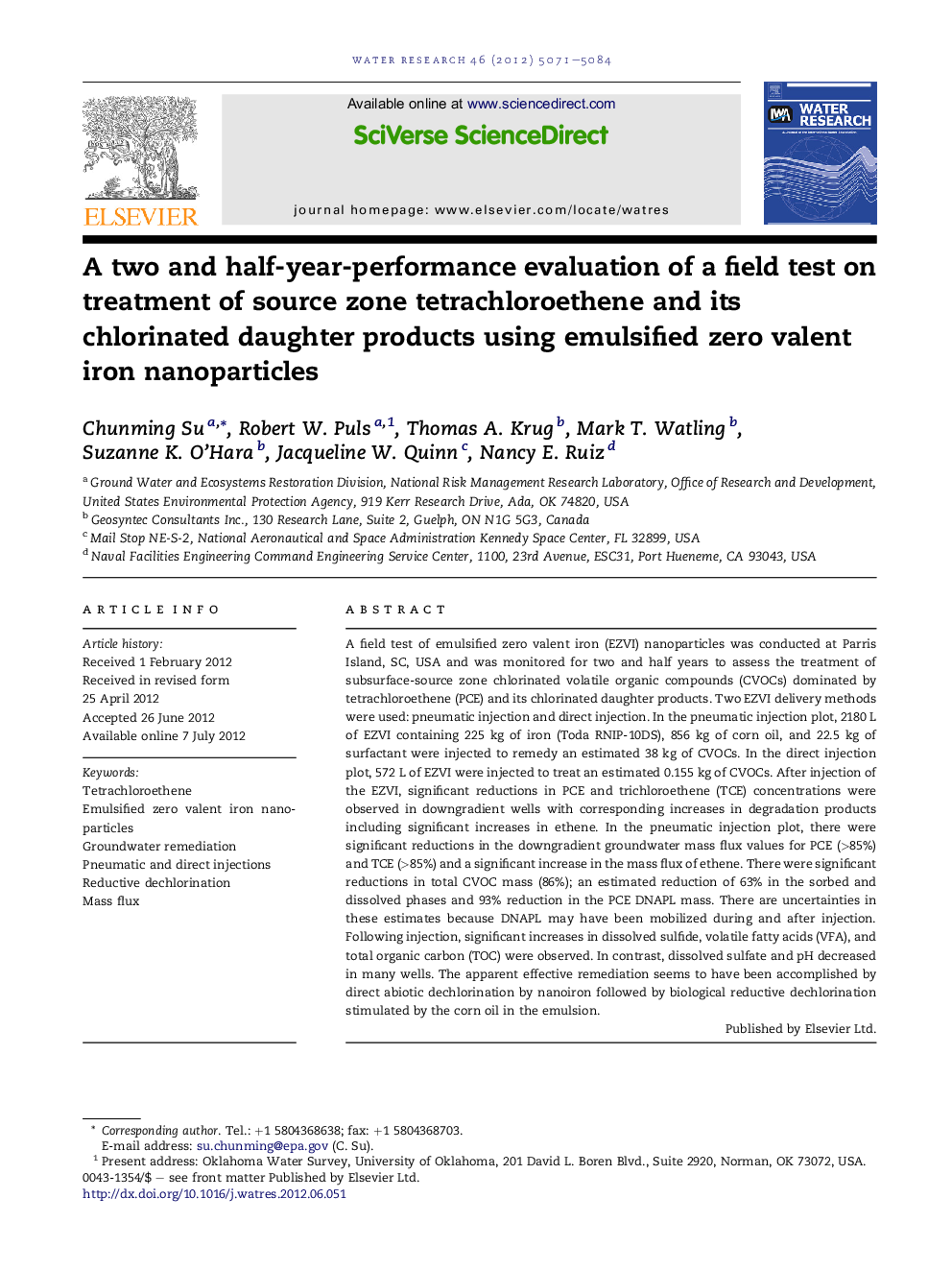| کد مقاله | کد نشریه | سال انتشار | مقاله انگلیسی | نسخه تمام متن |
|---|---|---|---|---|
| 4482736 | 1316868 | 2012 | 14 صفحه PDF | دانلود رایگان |

A field test of emulsified zero valent iron (EZVI) nanoparticles was conducted at Parris Island, SC, USA and was monitored for two and half years to assess the treatment of subsurface-source zone chlorinated volatile organic compounds (CVOCs) dominated by tetrachloroethene (PCE) and its chlorinated daughter products. Two EZVI delivery methods were used: pneumatic injection and direct injection. In the pneumatic injection plot, 2180 L of EZVI containing 225 kg of iron (Toda RNIP-10DS), 856 kg of corn oil, and 22.5 kg of surfactant were injected to remedy an estimated 38 kg of CVOCs. In the direct injection plot, 572 L of EZVI were injected to treat an estimated 0.155 kg of CVOCs. After injection of the EZVI, significant reductions in PCE and trichloroethene (TCE) concentrations were observed in downgradient wells with corresponding increases in degradation products including significant increases in ethene. In the pneumatic injection plot, there were significant reductions in the downgradient groundwater mass flux values for PCE (>85%) and TCE (>85%) and a significant increase in the mass flux of ethene. There were significant reductions in total CVOC mass (86%); an estimated reduction of 63% in the sorbed and dissolved phases and 93% reduction in the PCE DNAPL mass. There are uncertainties in these estimates because DNAPL may have been mobilized during and after injection. Following injection, significant increases in dissolved sulfide, volatile fatty acids (VFA), and total organic carbon (TOC) were observed. In contrast, dissolved sulfate and pH decreased in many wells. The apparent effective remediation seems to have been accomplished by direct abiotic dechlorination by nanoiron followed by biological reductive dechlorination stimulated by the corn oil in the emulsion.
Figure optionsDownload high-quality image (271 K)Download as PowerPoint slideHighlights
► Emulsified nanoscale zero valent iron was pneumatically or directly injected to treat source-zone tetrachloroethene.
► Decreased CVOC concentrations were correlated to increases in degradation products including ethene.
► Initial abiotic degradation of PCE by nanoiron was followed by biological degradation.
► Biological degradation was stimulated by volatile fatty acids produced from corn oil fermentation.
► EZVI treatment resulted in a significant reduction in the sorbed and dissolved phases and in the PCE DNAPL mass.
Journal: Water Research - Volume 46, Issue 16, 15 October 2012, Pages 5071–5084